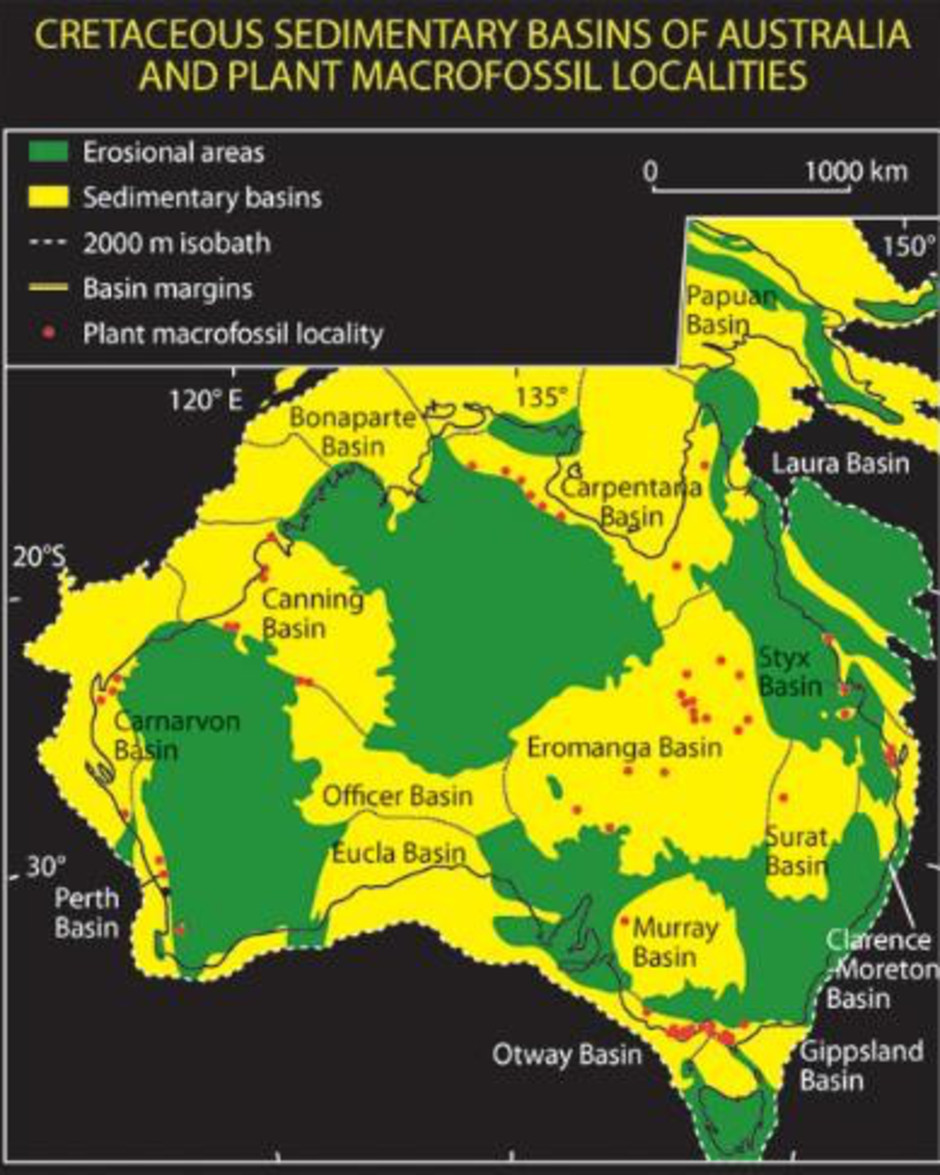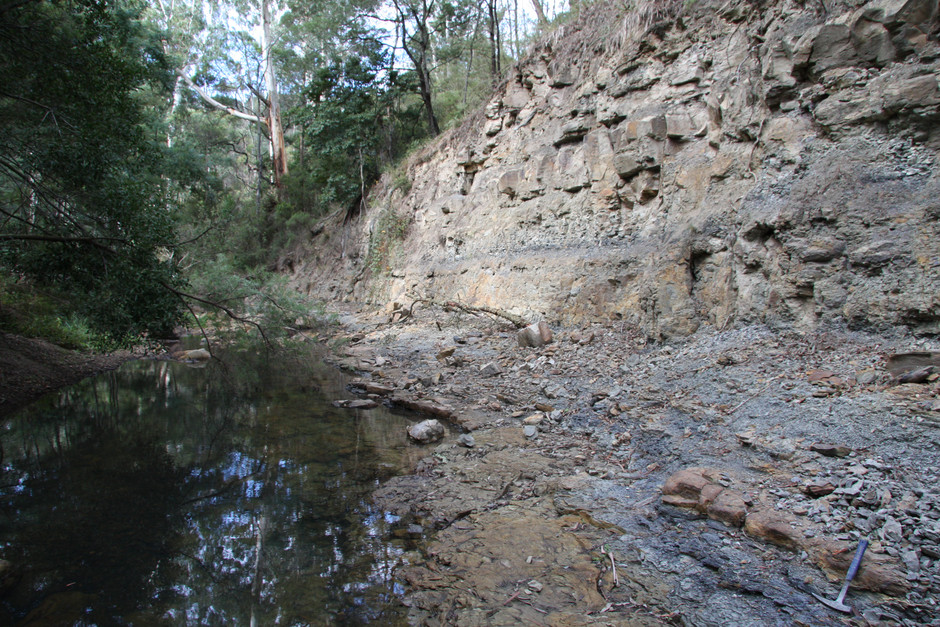Collections remain undescribed
Many studies over the past four decades have undertaken the description of the Australian Cretaceous floras, although a large number of assemblages remain undescribed or inadequately documented.
There are extensive collections of Australian Cretaceous plant fossils in various Australian state museums but, beyond Australia, the Swedish Museum of Natural History probably holds the largest single collection of Australian Cretaceous plants in the form of a large assemblage from Boola Boola (in Victoria), and smaller collections from various sites around the continent.
Distribution of the Boola Boola (Rintoul Creek) flora
The southern supercontinent, Gondwana, continued its fragmentation during the Cretaceous. Australia´s isolation initiated in the Middle Jurassic with rifting along the northern margin of the continent.
Extensive basins of fluvial sediments that had accumulated in Australia´s interior during the Jurassic, were flooded by vast shallow seaways during the Early Cretaceous (Valanginian—Albian: 140—100 million years ago). The thick sheets of predominantly fine siliciclastic sediments deposited in these palaeoenvironments now form the seals for extensive aquifers (Dettmann et al. 1992), and preserve rich assemblages of coccoliths, radiolarians, foraminifera and palynomorphs that allow precise dating of the rock successions (Apthorpe 1979, Haig 1979, Morgan 1980, Helby et al. 1987, Shafik 1990, Howe et al. 2000).
Biostratigraphical studies important
Such biostratigraphical studies have been particularly important for correlating strata within and beyond the Australasian region (Hollis 1997, Raine 2008) because volcanic materials suitable for radiometric dating are scarce and the long normal polarity signature (the Cretaceous Magnetic ‘Quiet Zone´) that characterizes the middle part of the period (McElhinny & Burek 1971) inhibits fine magnetostratigraphic resolution.
Summarized from McLoughlin & Kear 2010

Cretaceous sedimentary basins of Australia with major plant macrofossil localities marked by red dots.

